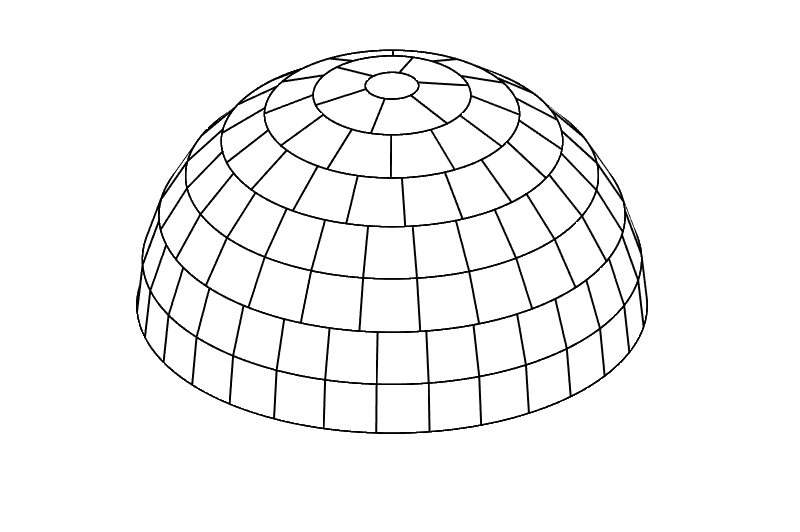polardataE
The polardataE function calculates the resulting horizontal and vertical illuminances for a given Tregenza luminance distribution with 145 patches. The Tregenza hemisphere is assumed to have 100% coverage as in figure 1 in contrast to the original Tregenza model.

Usage:
[Eh,Ev] = polardataE(L,vdir)
Where:
| Parameter | Description |
Eh | Is the resulting horizontal illuminance E_h. |
Ev | Are the resulting vertical illuminances E_{v,i} in i vertical directions, specified by the vdir parameter. Note: this method neglects the influence of the sourrounding reflectances e.g. the environment terrain. |
L | Is the Tregenza luminance distribution in \textrm{cd}\cdot\textrm{m}^2 as 145 \times 1 vector. |
vdir | Specifies the vertical compass direction using the azimuth angle, starting in north and going clockwise, default [0:359]. For compass directions north, east, south, west use: [0 90 180 270] |
Examples
Horizontal and vertical illuminance (N,E,S,W) for CIE sky 5 with \alpha_S=180° and \gamma_S = 40°:
L = ciesky(5,180,40,'Eh',10000); [Eh,Ev] = polardataE(L,[0 90 180 270])
See also: ciesky
Result:
Eh = 10000.0 Ev = 4896.3 4904.7 4900.4 4896.6
Note: CIE sky 5 has a uniform luminance distribution. The differences in the resulting vertical illuminances are due to different patch center coordinates which are used for cosine correction of the individual patch.
Vertical illuminance for \alpha = 160° for CIE sky 12 with \alpha_S=160° and \gamma_S = 40°:
L = ciesky(12,160,40,'Eh',50000); [~,Ev] = polardataE(L,160)
See also: ciesky
Result:
Ev = 5.0554e+04
Reference
Peter Roy Tregenza: Subdivision of the sky hemisphere for luminance measurements. In: Lighting Research and Technology, vol. 19, no. 1, pp. 13-14, 1987, DOI: 10.1177/096032718701900103 URL: https://journals.sagepub.com/doi/10.1177/096032718701900103